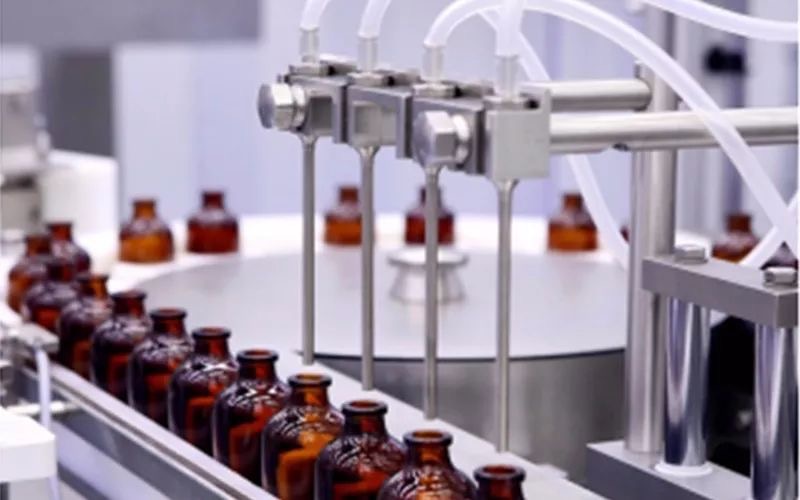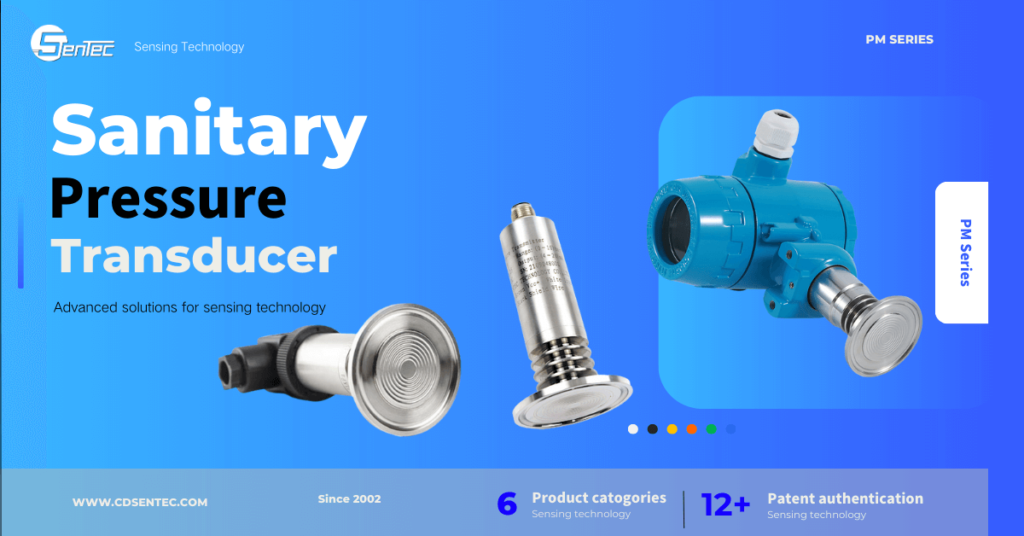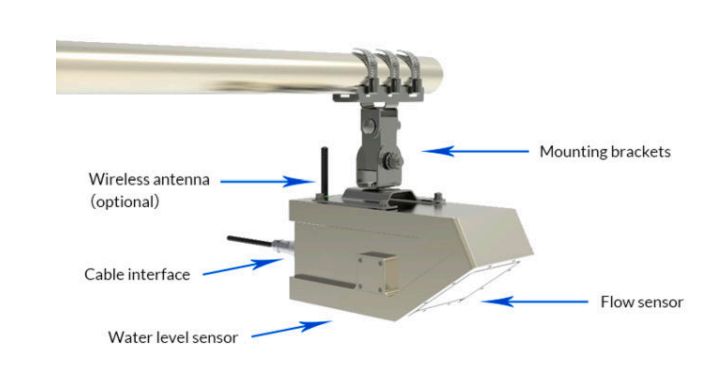The food and beverage industry, a sector highly regulated due to the critical nature of its products, relies heavily on advanced technology and equipment to maintain its standards. Among these, the sanitary pressure transducer holds a key role in ensuring the safety, quality, and consistency of products. Let’s delve into the fascinating world of sanitary pressure transducers and understand their vital role in this important industry.

Introduction to Sanitary Pressure Transducers
Sanitary pressure transducers are a type of pressure sensor designed specifically for hygienic applications. They are typically used in industries such as food and beverage, pharmaceutical, and biotechnology where sanitary conditions are paramount.

These devices measure pressure by converting the physical force exerted by a fluid into an electrical signal. The unique design of sanitary pressure transducers ensures that they can be thoroughly cleaned and sterilized, thereby preventing contamination and ensuring the safety and quality of the products they help produce.
Importance of Sanitary Pressure Transducers in the Food and Beverage Industry
The food and beverage industry is characterized by stringent safety and hygiene regulations. Every aspect of the production process, from raw material handling to final product packaging, must be controlled to ensure the absence of any contaminants that could potentially harm consumers.
In this context, sanitary pressure transducers play a crucial role. They provide accurate and reliable pressure measurements, which are critical in various stages of food and beverage processing. For instance, in the brewing industry, maintaining the correct pressure during fermentation is vital to ensure the quality and taste of the beer produced. Similarly, in dairy processing, accurate pressure control is required during pasteurization to kill harmful bacteria without affecting the nutritional quality of the milk.
Understanding Sanitary Pressure Transmitter
A sanitary pressure transmitter, often used interchangeably with a sanitary pressure transducer, is a device that measures the pressure in a process and transmits this information to a control system. This pressure data is crucial for controlling and monitoring the quality of the product being processed.
In the food and beverage industry, the sanitary pressure transmitter is often incorporated in the production line to monitor critical parameters such as temperature, flow, and pressure. This information is essential for maintaining the desired product quality and ensuring compliance with food safety regulations.
Different Types of Sanitary Pressure Transducers
There are several types of sanitary pressure transducers, each designed to meet specific requirements in the food and beverage industry. These include the sanitary flush diaphragm pressure transducer and the intrinsically safe sanitary pressure transducer, among others.
The sanitary flush diaphragm pressure transducer is designed with a flush diaphragm that prevents the buildup of residue or particles, making it ideal for measuring pressure in viscous or particulate-laden media. On the other hand, the intrinsically safe sanitary pressure transducer is designed to operate safely in hazardous environments where there is a risk of explosion, making it suitable for use in volatile environments such as alcohol production.
Working Principle of Sanitary Pressure Transducers
Sanitary pressure transducers work on the principle of converting pressure into an electrical signal. The pressure applied by the process fluid acts on a sensing element, typically a diaphragm, which deforms in response to the pressure. This deformation is then converted into an electrical signal proportional to the pressure.
In the case of a sanitary flush diaphragm pressure transducer, the flush diaphragm is in direct contact with the process fluid. This configuration eliminates dead spaces where residue or particles could accumulate, ensuring a clean and hygienic measurement.
Features of Sanitary Flush Diaphragm Pressure Transducer
The sanitary flush diaphragm pressure transducer is a popular choice in the food and beverage industry due to its unique features. This type of transducer is designed to withstand the harsh conditions commonly encountered in food and beverage processing, such as high temperatures, aggressive cleaning agents, and high-pressure washdowns.
One of its key features is the flush diaphragm, which is designed to prevent the accumulation of residue or particles. This ensures that the transducer can be thoroughly cleaned and sterilized, thus maintaining the sanitary conditions required in the food and beverage industry.
Role of Intrinsically Safe Sanitary Pressure Transducer in Maintaining Hygiene
Intrinsically safe sanitary pressure transducers are another type of sanitary pressure transducer often used in the food and beverage industry. These devices are designed to operate safely in environments where there is a risk of explosion due to the presence of flammable gases or dust.
In the food and beverage industry, the risk of explosion is particularly high in the production of alcoholic beverages, where volatile substances such as ethanol are present. Intrinsically safe sanitary pressure transducers ensure the safety of these processes by preventing the ignition of these substances, thereby contributing to the overall hygiene and safety of the production environment.
Installation and Maintenance of Sanitary Pressure Transducers
The installation and maintenance of sanitary pressure transducers are critical to their performance and longevity. These devices should be installed according to the manufacturer’s instructions to ensure their accurate and reliable operation.
What should I do if the sanitary pressure transmitter fails?
First of all, it is necessary to understand the situation of the failure problem, so as to determine how to repair the failure, especially to make a comprehensive consideration according to the actual needs, so as to ensure that various unexpected situations can be avoided during the work process. It is recommended to choose a professional and formal maintenance level. To carry out targeted maintenance, all kinds of failures should stop working in time, and do not let it work while sick, which may lead to more serious failures.
Secondly, don’t be too anxious after the failure, stop the work through the correct operation process, so as to avoid various dangerous situations, and the product characteristics will not be affected in any way, through the correct way to carry out comprehensive maintenance, naturally It will restore the normal use function, avoid unexpected situations during use, and reasonably control the use cost, so there is no need to worry that there will be no way to use it normally after a fault occurs.
If the sanitary pressure transmitter fails, it should be solved by the above methods, which not only ensures that the functional characteristics are more fully reflected, but also avoids affecting the subsequent work process, which will also have a good promotion effect on the cost of compression. It is recommended Solve the fault in the correct way, so as to avoid unnecessary impact during transportation and bring a more perfect user experience.
Maintenance involves regular cleaning and sterilization to prevent the buildup of residue or particles that could affect the accuracy of the pressure measurements. In addition, periodic calibration is necessary to ensure that the transducer continues to provide accurate and reliable readings.
Case Study: The Impact of Sanitary Pressure Transducers on the Quality of Food and Beverages
To illustrate the value of sanitary pressure transducers in the food and beverage industry, consider a case study from a dairy processing plant. The plant had been experiencing inconsistencies in the quality of its products, which were traced back to fluctuations in the pressure of the pasteurization process.
After installing sanitary pressure transducers, the plant was able to accurately monitor and control the pressure during pasteurization. This resulted in a significant improvement in the consistency and quality of the dairy products produced, demonstrating the vital role of sanitary pressure transducers in ensuring the quality of food and beverages.
Conclusion: The Future of Sanitary Pressure Transducers in the Food and Beverage Industry
Looking ahead, sanitary pressure transducers will continue to play a crucial role in the food and beverage industry. As the industry continues to evolve and innovate, so too will the technology supporting it. The future of sanitary pressure transducers will likely see further advancements in technology, leading to even greater accuracy, reliability, and ease of use.
In conclusion, sanitary pressure transducers are a vital component of the food and beverage industry, playing a critical role in ensuring the safety, quality, and consistency of the products we consume. As we look to the future, the importance of these devices can only be expected to grow. Whether you’re a food and beverage producer, a consumer, or simply someone interested in the technology behind the products we consume, understanding the role of sanitary pressure transducers is undoubtedly worthwhile.




